ReaktionChamber
Harmless

Posts: 10
Registered: 6-12-2017
Member Is Offline
Mood: No Mood
|
|
Failed chrome alum synthesis
Hey guys,
So I attempted synthesis chrome alum, but failed:
I've followed this procedure:
98 grams of potassium dichromate are placed in a porcelain dish containing 400 ml of water. 76 ml of concentrated sulfuric acid are slowly added and
stirred until all the salt is dissolved. If potassium dichromate has not completely dissolved the mixture is warmed gently. After all the salt has
dissolved, the solution is filtered if it is not absolutely clear. Then 63 ml of ethyl alcohol are cautiously added, by stirring the reaction mixture
after each addition and by allowing the heat of the reaction to raise the temperature of the solution to the boiling point. When all ethanol has been
added the flask is covered and the hot solution is left to stand for a week or longer. The obtained crystals of chrome alum are filtered and if the
filtrate is evaporated the additional amount of chrome alum is obtained. The crystals are dried and stored in a bottle since they are efflorescent.
Chrome alum obtained by described method contains twelve molecules of crystalized water (dodecahydrate) – KCr(SO4)2· 12H2O
I've prepared my potassium dichromate before, but I was still in an acidic solution of sulfuric acid. To make sure I have enough sulfuric acid I than
added some ml sulfuric acid and added the EtOH dropwise. Unfortunately my product has this really dark green tinch and not purple/black as is should
have. I searched for related compounds, and found chromium sulfate which has exactly the coulour of my product. On the internet the procedure for the
synthesis of chrome sulfate is the same as I used to prep. Chrome alum.... My question: could it be, that the pH was to low to form chrome alum? Could
I add some potassium hydroxide, to form chrome alum?
If u have any solutions for my problem, I would be glad to hear them!
still, thank u
Reaktionchamber
|
|
|
CharlieA
National Hazard
   
Posts: 646
Registered: 11-8-2015
Location: Missouri, USA
Member Is Offline
Mood: No Mood
|
|
I'm not sure what the answer is to your question, but you might want to read "Chrome alum" in Wikipedia. This article might be suggesting that you
used too high of a temperature.
|
|
|
woelen
Super Administrator
        
Posts: 8012
Registered: 20-8-2005
Location: Netherlands
Member Is Offline
Mood: interested
|
|
Your problem indeed is that the temperature was too high. Chromium(III) ions form dark purple/grey hexaaqua ions, which crystallize with sulfate ions
and potassium ions to give chrome alum. If the liquid is too hot, then you get a sulfato-complex of chromium, which has a deep green color. This
sulfato-complex is very stable and it will take weeks or even months on cold storage before it is converted back to hexaaqua chromium(III) ions and
free sulfate ions.
The green sulfato-complex does not crystallize well. If you heat the liquid, you get a thick green fairly acidic syrup, which on standing will form a
hard glassy mass or a sticky paste (depending on how much excess H2SO4 there is). Both are undesirable products.
Your only remedy now is to allow this green liquid to stand for a few weeks. Eventually it will convert back to free sulfate ions and chromium(III)
ions.
it is good to have a little excess acid in the reaction mix. You definitely should not have a too high pH, because that will lead to formation of a
fine precipitate, which makes formation of nice crystals nearly impossible.
-------------------------------------------------
A nice experiment for people who have chrome alum or chromium(III) sulfate is to dissolve some of it in water (or better: in 0.5 to 1% H2SO4), giving
a purple/greyish/blue solution. Try to make the solution not too concentrated, otherwise it becomes so dark that observing the color change becomes
somewhat difficult. Then heat the solution to boiling. You see the color shifting towards green. it is a remarkable color change. Put the hot solution
aside and allow it to stand for several days. Slowly, over the days, you see the color revert to the purple/greyish/blue of a fresh solution of chrome
alum.
[Edited on 7-12-17 by woelen]
|
|
|
Foeskes
Hazard to Others
  
Posts: 156
Registered: 25-2-2017
Member Is Offline
Mood: No Mood
|
|
Here is my attempt:
I used K2Cr2O7(10g) and I dissolve it in 50ml of water.
In an ice bath I added 20ml of H2SO4(excess) and after the temperature returned to 30c (the room temp here) I added 3 ml of isopropyl alcohol(70% v/v)
and after the temperature dropped back to 30 c I repeat it until I used a total of 15 ml(excess).
I have 2 containers the small one uses a massive 3x excess of H2SO4 and the other one I used a small excess(the procedure above) the result is a dark
blue-ish color.
EDIT: after leaving outside for about 12 hours I got 3 crystals of chrome alum. (One of them in the image)
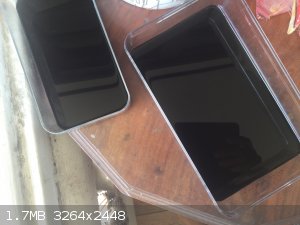 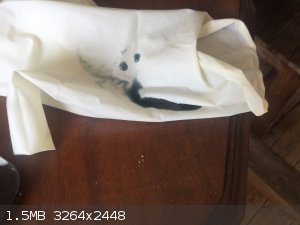
[Edited on 8-12-2017 by Foeskes]
[Edited on 8-12-2017 by Foeskes]
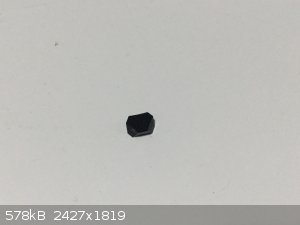
|
|
|
woelen
Super Administrator
        
Posts: 8012
Registered: 20-8-2005
Location: Netherlands
Member Is Offline
Mood: interested
|
|
How large are the crystals? It looks very good.
|
|
|
Foeskes
Hazard to Others
  
Posts: 156
Registered: 25-2-2017
Member Is Offline
Mood: No Mood
|
|
The longest side is 6mm
Edit: after leaving for 24 hours there are 3 large crystals, unfortunately there are some small irregular shaped crystals in the bottom of my drying
dish due to dust and small flys collecting in the drying dish(do insects like sulfuric acid or something? They always fall into acidic solutions I try
to dry)
[Edited on 9-12-2017 by Foeskes]
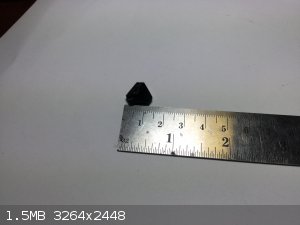 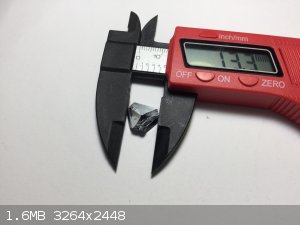
|
|
|
unionised
International Hazard
    
Posts: 5126
Registered: 1-11-2003
Location: UK
Member Is Offline
Mood: No Mood
|
|
There's another cute trick you can do with chrome alum crystal.
If you put them in a saturated solution of ordinary alum it will grow a layer of clear alum over the chrome alum. You can then put that in a solution
of chrome alum and get "striped" crystals.
Also. mixtures of the two alums will give a range of colours from pale violet to almost black.
Not much use, but pretty.
|
|
|